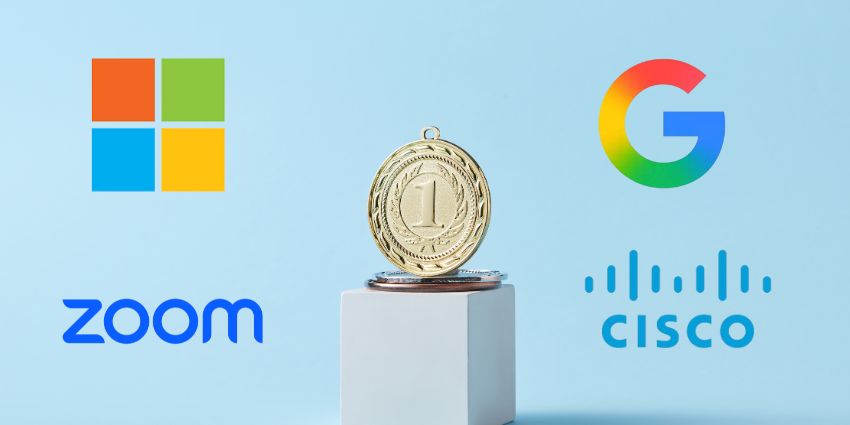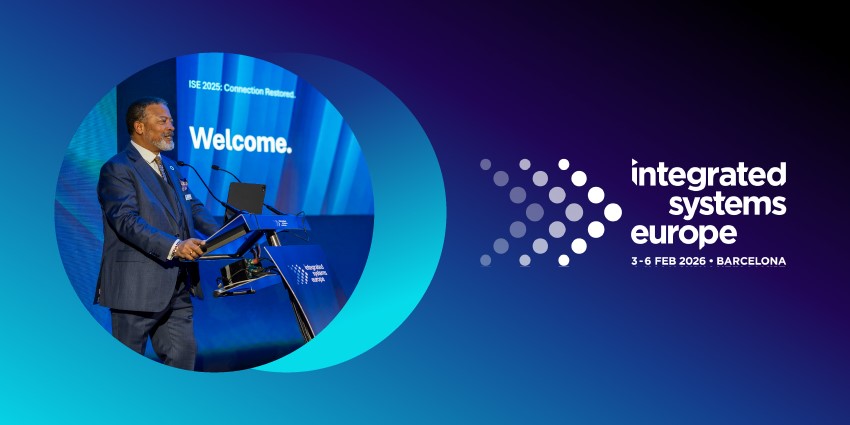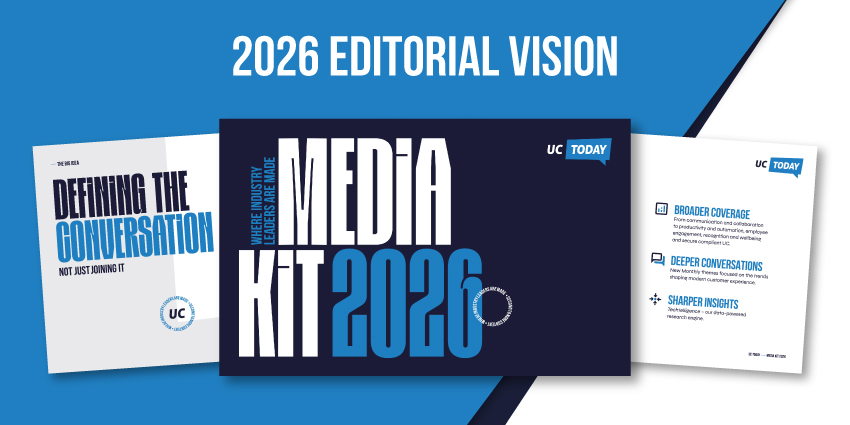Forrester’s latest Wave report for UCaaS reveals clear front-runners in an increasingly competitive market: Zoom, Google, Cisco, and Microsoft.
As businesses accelerate digital transformation, these four vendors have emerged as leaders in the field – setting the pace for innovation, reliability, and AI-driven collaboration in Q3 2025.
“While AI has saturated roadmaps, equally important have been investments in increasing reliability, resiliency, and cross-vendor integration,” said Will McKeon-White, Senior Analyst, Forrester Research.
The market still has a ways to go on all fronts – especially with cross-vendor integration – but progress is being made.”
Zoom: A Relentless Focus on AI and Reliability
Zoom continues to evolve beyond its video conferencing roots. Its Workplace platform is gaining traction for its strategic AI investments, particularly in meeting enhancement, action automation, and notetaking tools.
It scored highly for workstream persistence, platform resiliency, and local backup support, including LTE and satellite failover options for critical business communications.
Customers highlighted Zoom’s ability to modernise workflows and improve day-to-day collaboration.
Its ability to tie AI-generated meeting insights directly to business systems was called a major differentiator, reflecting a vision that goes well beyond meetings alone.
Google: Pushing the Boundaries of Modality Blending
Google is doubling down on its UCaaS offering by integrating Google Meet, Google Chat, and Google Voice into a smarter, more seamless collaboration environment. Its AI capabilities – such as real-time translation, background noise reduction, and automated transcription –were praised in the report.
Google stands out for its modality blending approach, which aims to dissolve the lines between meetings, chat, and asynchronous collaboration.
However, Forrester flagged Google’s limited global phone coverage as a notable drawback, especially for enterprise clients with multinational operations.
Cisco: Hybrid Resiliency and Enterprise-Grade Security
Cisco’s Webex Suite remains a top-tier UCaaS solution for businesses seeking robust security, hybrid deployment flexibility, and cross-vendor interoperability.
The report highlighted Cisco’s innovations in AI video codecs, advanced noise suppression, and satellite-based failover, positioning it as a pioneer in multivendor UC environments.
While it excels in real-time communication and resiliency, the report said the company still has work to do in enabling no-code/low-code employee automation – a growing priority for businesses looking to empower non-technical staff with self-service tools.
Microsoft: Teams Dominates in Usage and Integration
With Teams cementing its position as the most widely adopted UCaaS platform globally, Microsoft continues to dominate in meetings and messaging, backed by powerful integration with Microsoft 365.
The platform’s no-code automation tools and deep app ecosystem make it a favourite among organisations invested in digital workflows.
However, the report notes some limitations in Teams’ phone capabilities, including restricted geographic support and advanced features.
Additionally, occasional performance glitches remain a sticking point for some users. Microsoft’s decision not to provide customer references for the evaluation was also noted as a transparency gap.
Strong Performers and Contenders: The Rest of the Pack
Beyond the leaders, Forrester identified a tier of Strong Performers and Contenders – vendors making strategic moves but still trailing in key areas:
- 8×8: A well-rounded platform offering UCaaS, CCaaS, and CPaaS. Strong in phone coverage and industry-specific features but less competitive in internal collaboration.
- RingCentral: Investing heavily in AI, RingCentral brings strong voice capabilities and migration tools for legacy systems.
- Dialpad: Leaning into its AI heritage, Dialpad offers a sleek phone system and simple admin experience but lacks strength in video and messaging.
- GoTo: Known for value and simplicity, GoTo excels in telephony but is still building out its video and chat AI capabilities.
- Vonage, Telavox, Intermedia, and Zoho round out the list with specialized offerings in mobile support, CPaaS integration, and vertical alignment – but they currently lag behind on advanced AI features and platform unification.
Key UCaaS Priorities for IT Leaders
According to Forrester, businesses evaluating UCaaS solutions in 2025 should focus on three critical areas:
Reliability & Resiliency: Choose platforms with proven uptime, financially backed SLAs, and failover support including LTE and satellite options.
Full Unification with Cross-Vendor Support: Look for vendors committed to openness, especially in video and messaging interoperability.
AI That Actually Helps: Go beyond buzzwords – seek out AI that improves the user experience (e.g., noise cancellation, summaries, action tracking) without requiring complex customisation.
Final Thoughts: Who’s Winning the UCaaS War?
As businesses continue to streamline communication stacks, the ability to blend resilience, intelligence, and cross-platform integration is becoming a critical differentiator.
While Zoom, Google, Cisco, and Microsoft currently lead the UCaaS pack, the market is far from static. Emerging players and specialised vendors are pushing the boundaries in phone systems, AI, and hybrid solutions.
Ultimately, Forrester’s Q3 2025 UCaaS evaluation serves as both a benchmark and a roadmap. Organisations are encouraged to align vendor strengths with their specific needs – whether it’s global scalability, industry compliance, or AI-enhanced productivity.







